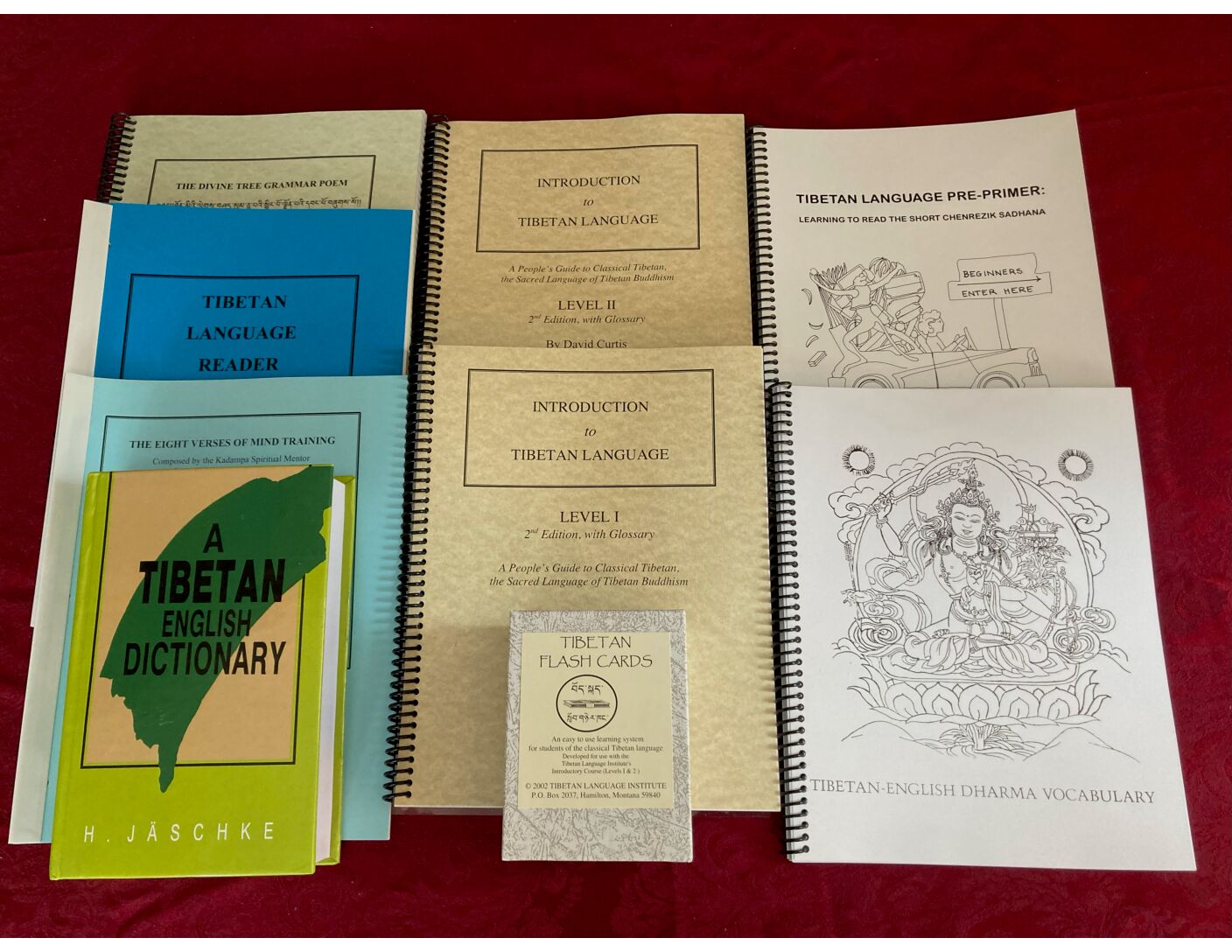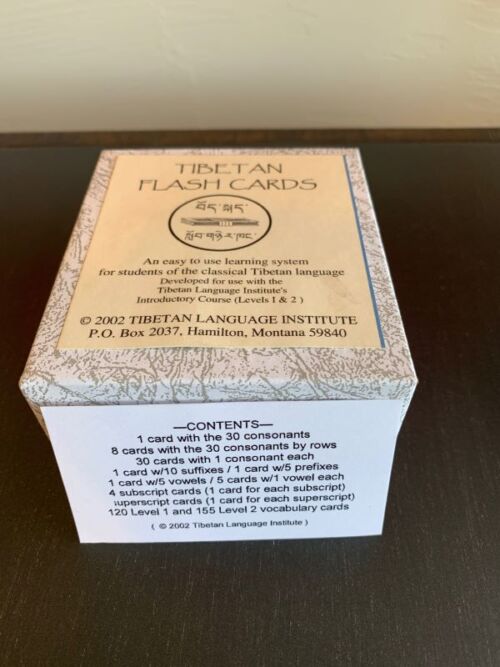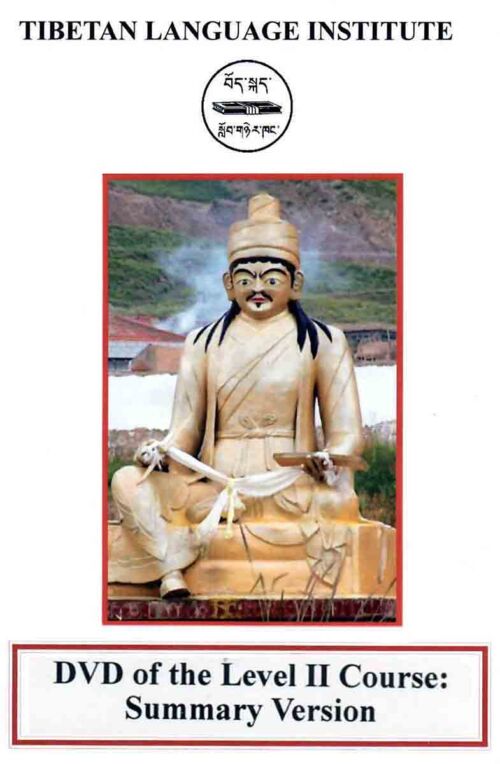Building on a foundation of the study of words, phrases and sentences in Tibetan, the student will begin to integrate material presented in the Level 1 course, learning how Tibetan works as a language. This course lays the foundation for the successful reading of Tibetan texts and participation in the Level III Reading Course.
Tibetan Level 2 Course Registration
$150.00
- Description
- Additional information
- How This Course Works
- Required & Recommended Materials
- Course Details
- Course Instructor
- What Students Say about the Level 2 Course:
Description
Tibetan Level 2 Course: The Basics of Reading Tibetan Texts
Spring Session 2025
Experience the joy of reading your Dharma texts and prayers in Tibetan!
Building on a foundation of the study of words, phrases, and sentences in Tibetan, students will begin to integrate the material presented in the Level 1 course, learning how Tibetan works as a language.
This course is a 10-week course is by pre-recorded classes in Dropbox, plus 2 live Q & A sessions by Zoom with Lama David Curtis. An acharya/master teacher, students will continue their excursion with Lama David into the mysteries and wonders of Classical Literary Tibetan—learning to read Tibetan prayers and texts.
Words (the vocabulary) and grammar (the rules of usage of words) are the two principal components of language. In the Level I Course, students learned how to read, spell, and pronounce Tibetan words. They acquired a base vocabulary on which to build.
Now in the Level 2 Course, students turn to that other part of language, the grammar.
- Discover the basics of how Tibetan fits together (words, phrases, clauses, and sentences).
- Broaden your essential Tibetan Buddhist vocabulary, including the terms for the Six States of Existence, the Six Perfections, and the Heart Sutra.
Acquiring this knowledge empowers a Dharma student to go further into the exploration of the beauty, power, and inspiration of Tibetan texts and teachings.
Study materials are sold separately. Students will need the new edition of the Level II Workbook (2021); the new edition of the Level I & Level II Vocabulary Flashcards will be very helpful. We recommend the Tibetan Level 2 Package.
This course is a 10-week course featuring pre-recorded classes in Dropbox, plus 2 live sessions by Zoom with Lama David Curtis (dates for those live sessions TBA). This course allows students who have completed the Level I Course to continue their studies and prepare for future grammar and reading courses with TLI.
Student commitment: to study 30 minutes of Tibetan per day. Students will receive weekly study guides and various study aids.
Class Dates: Wednesdays, April 23-June 25, 2025.
Necessary class size: 10 students
Time: N/A
Duration: 10 Weeks
Hosted on: Dropbox by pre-recording, plus 2 short Q & A sessions on Zoom.
Class recordings: Uploaded on Wednesdays.
Video Recordings of classes will be available to registered students until September 8, 2025.
Additional information
| Brand | Tibetan Language Institute |
|---|
How This Course Works
- Add this course to your cart.
- Purchase your study materials. We suggest the Tibetan Level II Package for this course, but the Level II Workbook is all that is required.
- Check out and pay. You will receive a confirmation of your purchase, and then shortly before the class start date, a personal welcome email with course details.
- For the duration of the course, class video recordings, study guides, and homework keys will be made available to you each week as you progress through the course.
Required & Recommended Materials
Required Materials
The complete Tibetan Level II Package is intended to help students to thrive in the Level 2 Course. Some items will be used in later courses and be very useful for students in the self-paced study. Items in the Tibetan Level II Package can be ordered separately.
Recommended:
- Level 2 Package Best Value!
Course Details
Being able to access this kind of course from the comfort of your home or when you are traveling is a great opportunity to continue to deepen your relationship to the Dharma.
Question & Answer Zoom meetings on 3 dates to be announced in class
4:00 PM – 5:00 PM Pacific Time
5:00 PM – 6;00 PM Mountain Time
6:00PM – 7:00 PM Central Time
7:00PM – 8:00 PM Eastern Time
Course Instructor
The principal instructor at TLI is David Curtis. He has a university degree in Classical language. David began his Dharma studies in 1980, traveling in 1984 to receive teachings from H.H. the Dalai Lama. He lived and trained at Kagyu Ling in France, in 1992 completing the traditional Tibetan Three-Year Retreat in meditation, yoga, and philosophy. Subsequently, David has sought teachings from all schools of Tibetan Buddhism.
In 1993 he began teaching the Tibetan language to students in Los Angeles. Many Rinpoches from Kagyu and Nyingma lineages have encouraged him to teach Tibetan and guide others in their meditation practice. As a teacher and author, Lama David established the nonprofit Tibetan Language Institute in 1996 and is its president and executive director.
Lama David combines his linguistic skills with a practitioner’s knowledge of Tibetan Buddhism. In 2007, Gochen Tulku Rinpoche (Tulku Sang-ngag Rinpoche) awarded him the title of Acharya (master teacher). For more information.
What Students Say about the Level 2 Course:
Lama David is an outstanding teacher of classical Tibetan. He is passionate and joyful about this intense language, and shares such helpful tips that only a lifelong language expert in Tibetan would know. I learned so much, got fired up to learn more, and have broadened my understanding of Tibetan and especially the Tibetan form of Buddhism. I cannot recommend this course highly enough! – Julie T.
So many other Tibetan Language education classes are either unapproachable or only emphasize everyday conversational skills. The Classical Literary Tibetan is required for those dedicated to formation in Tibetan Buddhism…The instructions from Lama David provide a complete overview and lay the groundwork for second language acquisition in Tibetan pecha literacy. –Jane S.
Studying Tibetan language with Lama David Curtis is like being handed a golden key that allows access to the original meaning in practice and texts. Comprehension is easily attainable through study of the clear, concise materials and with the joyful encouragement from the Tibetan Language Institute people.—Sandra B.




